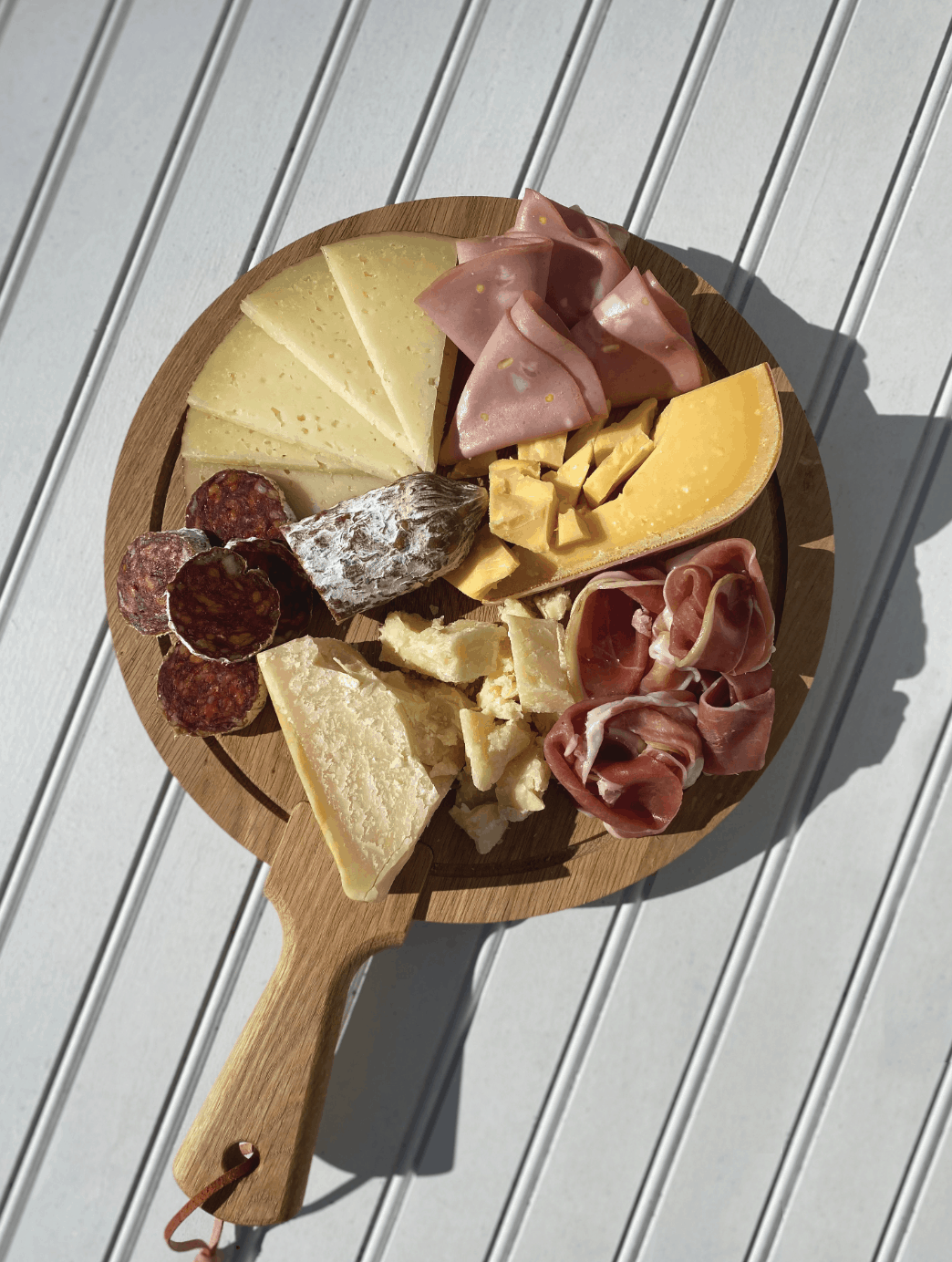
Photo by Madison Trapkin
I‘ve never met a cheese I didn’t like. When I was a kid, I used to adore the little wedges of Laughing Cow. I would sit at the table, carefully peel back the foil wrapper, and then shove the whole triangle of creamy processed goodness in my mouth. I also loved string cheese and found endless amusement in pulling apart strands and dangling them into my mouth from above. Other, more complex cheeses were hard to come by in Tokyo where I grew up, mainly because they weren’t available in the Japanese gourmet food market in the 1980s. My father had a taste for the stinky stuff—the smells only the cat would stick around for. When my father would return from a business trip to Paris or Milan, I knew I was in for it. He’d preciously wrap the contraband cheese in layers of paper and plastic so he could pass through customs undetected. I was lucky to be raised by parents who dug the funk.
As I matured, so did my taste buds. I developed a taste for cheese with character—weird, bright, tangy, earthy, rich, nutty, salty, sweet; when time, temperature, mold, and terroir come together in perfect harmony to produce each unique flavor profile. Salumi (Italian for “cured meats”) are produced in a very similar fashion, so it makes sense to match them with their dairy counterparts.
Within the salumi family, you’ll find many dry-cured meat products you’re already familiar with, such as prosciutto, Genoa salami, and mortadella. If you’re a more adventurous carnivore, perhaps you’ve sampled soppressata, finocchiona, capicola, or bresaola at your local Italian deli. And if you’re a fan of “The Sopranos” (or you live near an Italian-American community) you’ve probably heard pronunciations like “gabagool” (capicola) or “brejole” (bresaola). These are all salumi!
Salumi is made by manipulating natural elements, much like the cheesemaking process; the final flavor profile is defined by genetics (of hog or steer), diet, environment, and natural bacteria (a.k.a.cultures). Upon humane and ethical harvest, the meat product is then packed with salt and herbs and stored for a period of time. Salt is used to remove moisture from the meat and acts as an antimicrobial, which prevents the meat from spoiling at this early stage. Bits of salt penetrate deep beyond the surface of the meat through osmosis, replacing a portion of the moisture. This process is called curing.
The earliest forms of salumi were made simply with meat and salt, then left in a dry, cool place with ventilation to age over time. The same general technique is applied today. The bigger the muscle, the longer it takes to dry and age. For example, prosciutto takes a minimum of 16 months to reach its full maturation. Over time, things start to ferment; connective tissue begins to break down, crunchy salt crystals form in small nooks, and the true depth of flavor is exposed—aging is when the real magic begins, much like with cheese.
Beyond the ancient techniques and deeply engrained European traditions, I’m not entirely sure how dry-cured meats and cheeses became such a quintessential pairing. But the resulting taste is undeniable.



